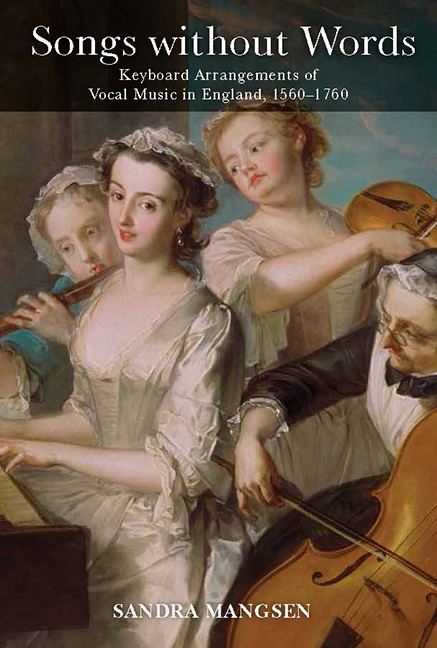Book contents
- Frontmatter
- Dedication
- Contents
- List of Illustrations
- Preface
- Acknowledgments
- Abbreviations
- Introduction
- 1 Ballads Transformed
- 2 Arias Domesticated: The Ladys Entertainment and Other Early Eighteenth-Century Anthologies
- 3 With Their Symphonies: William Babell and The Ladys Entertainment Books 3 and 4
- 4 Opera Remix: Babell's Suits of 1717
- 5 After Babell: Arrangements for Ladies and Gentlemen
- 6 Afterthoughts
- Appendix The Ladys Banquet (Second Series): Contents, Concordances, and Dissemination
- Notes
- Bibliography
- Index
5 - After Babell: Arrangements for Ladies and Gentlemen
Published online by Cambridge University Press: 17 July 2019
- Frontmatter
- Dedication
- Contents
- List of Illustrations
- Preface
- Acknowledgments
- Abbreviations
- Introduction
- 1 Ballads Transformed
- 2 Arias Domesticated: The Ladys Entertainment and Other Early Eighteenth-Century Anthologies
- 3 With Their Symphonies: William Babell and The Ladys Entertainment Books 3 and 4
- 4 Opera Remix: Babell's Suits of 1717
- 5 After Babell: Arrangements for Ladies and Gentlemen
- 6 Afterthoughts
- Appendix The Ladys Banquet (Second Series): Contents, Concordances, and Dissemination
- Notes
- Bibliography
- Index
Summary
Any Gentlemen, &c. may have their Sets completed …
William Babell died in 1723, leaving the Suits of 1717 as his final printed volume of keyboard music. After Babell's extravagant recompositions, Walsh's arrangement collections over the next decades returned to the simpler approach typical of the first Ladys Banquet volumes and books 1 and 2 of the Ladys Entertainment from the first decade of the century. Amateur harpsichordists must have found the pieces in books 1–6 of the new Ladys Banquet (1730–35) and in books 7–15 of The Harpsichord Master (1721–34) both accessible and appealing, if only as a relief from the much more demanding arrangements of Babell. In both series, keyboard versions of instrumental dances from court and stage were interspersed with arrangements of vocal music. In addition, Walsh initiated an extended series of generic instrumental arrangements of Handel's arias, variously titled, and aimed at a market that included not only harpsichordists, but also wind players, violinists, and collectors wanting to fill their library shelves. A new focus on gentlemen collectors is suggested by the phrase quoted above, which appeared on the title page of a collection of overtures arranged for keyboard. An examination of the content of these collections and of the approach to keyboard arrangement found within them is the focus of this chapter. The manuscript culture that continued to flourish will provide a backdrop to help us appreciate what music keyboard players were exploring at home during the middle decades of the century.
The Harpsichord Master, Books 7–15 (1721–34)
In chapter 2 we briefly surveyed the first six volumes in this series, but Walsh continued to issue volumes under this title until 1734. The title of book 7 (advertised in January, 1721) reads: “The Harpsichord-Master: The Seventh Book. Containing plain and easy Instructions for Learners on the Harpsichord or Spinnet; with a complete Explanation of Graces, and the true manner of fingering the Keys. Together with a Collection of Aires and Lessons proper for Learners, and the favourite Song Tunes, Minuets, Rigadoons, and Jiggs, now in use. All fairly engraven; price 2s.” Throughout the series, from its inception in 1697 through the final volume in 1734, the titles emphasize the suitability of the books for “Learners” as well as the current popularity of the songs and dances contained within.
- Type
- Chapter
- Information
- Songs without WordsKeyboard Arrangements of Vocal Music in England, 1560–1760, pp. 156 - 188Publisher: Boydell & BrewerPrint publication year: 2016

